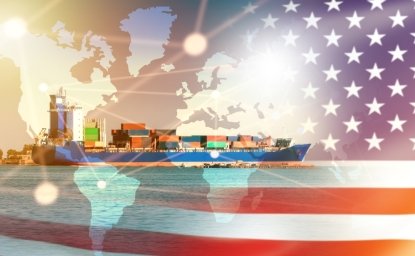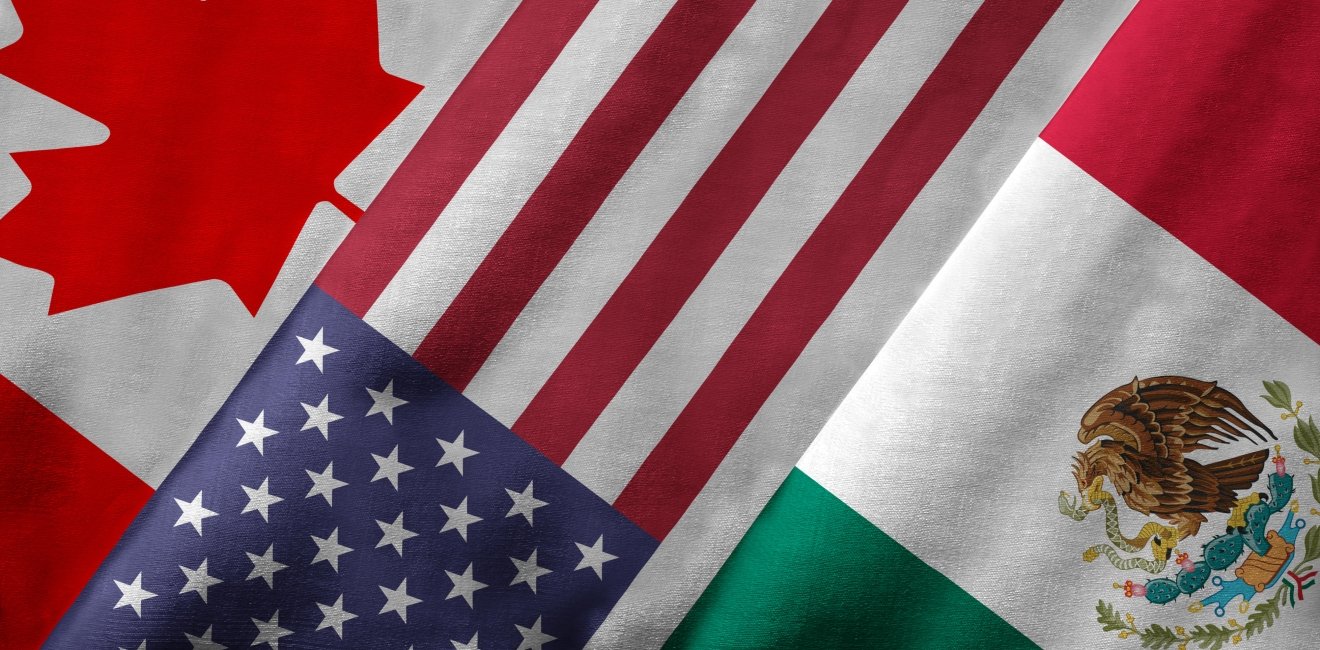Mexico and the United States are striving to reopen their integrated supply chains while grappling with the COVID-19 pandemic. Mexico is the United States’s biggest trading partner and the U.S. buys about 80 percent of Mexico’s imports.
The two countries, along with Canada, also plan to launch the new North American trade agreement — USMCA — on July 1. That could help the continent’s economies rebound from the pandemic. To maximize the impact on jobs and prosperity, however, USMCA’s launch and reopening supply chains need to be managed well.
The economic effects of the pandemic sent clear messages about the importance of resilient, robust, reliable and secure supply chains around the globe, including North America. Half of the goods traded in North America under NAFTA have been intermediate goods used in the production of final products in the U.S., Mexico and Canada. NAFTA’s private-sector commercial networks created mutual reliance on the supply chains linking the three neighbors.
The pandemic, however, disrupted supply chains within countries and across borders. The U.S., Mexican and Canadian governments managed to coordinate reducing cross-border traffic to decrease health concerns, while allowing commerce to continue. However, the U.S. and Mexico did not well coordinate decisions about which supply chains were designated as “essential.”
This inadvertently disconnected some Mexican supply chains to important sectors of the U.S. economy. To counter the pandemic, Mexico’s government ordered many companies to close, including producers of parts and inputs for U.S. sectors such as health, aerospace, autos and food and agriculture.
The U.S. and Mexico understandably were scrambling to protect workers from the virus. However, there was not sufficient communication between the two governments about the potential effects of decisions on crucial supply chains for the medical and defense sectors, for example. They apparently did not share definitions of what supply chains were essential. While there also were some initial U.S.-Canada problems, those two governments adopted similar definitions of essential supply chains and did not suffer serious disconnects.
Mexico and the U.S. share responsibility for assuring good crisis communications on supply chains, given the massive economic integration that exists. Since problems came to light, both governments have been moving to resolve them and restore the operations of key supply chains, while still caring for the health of workers.
This is a delicate task, given the pandemic’s characteristics. Each national government must work with their respective state governments and their private sectors, which built the supply chains over the past 25 years. Successfully reigniting both economies will be boosted by closer U.S.-Mexican coordination. Trade with Mexico supports some 5 million U.S. jobs, for example, and the International Monetary Fund (IMF) predicts big pandemic-linked GDP falls for both countries.
A well-coordinated, synchronized reopening with similar guidelines and expectations would make this complex task more manageable.
From Mexico’s perspective, it is critical that bilateral supply chain issues not fuel arguments to pull production back to the United States. Mexico’s prosperity is closely linked to being a reliable U.S. economic partner.
Mexico and the U.S. should establish mechanisms for addressing supply chain issues on a regular basis going forward. The private sector must be involved. The overarching goal should be to make North America’s supply chains more secure, reliable and competitive.
A valuable step would be to create a group of experts, from the public and private sectors, charged with providing recommendations to both governments for making supply chains more resilient and robust. The group could identify factors to help the governments find agreement on the relative importance of various sectoral supply chains, such as health, aerospace, food and autos, as well as on the steps to better prepare for and manage future crises.
Mexico has much to gain if it moves effectively to restart the supply chains and establish an effective bilateral dialogue. Many companies will be looking to establish shorter and more reliable supply chains as the world emerges from the pandemic.
Mexico’s location gives it an obvious advantage. On the other hand, mishandling issues and negative signals regarding investment security could be costly. For example, recent moves by Mexican authorities to change the rules of operation for the generation and sale of renewable energy in Mexico send worrisome messages about how investments will be treated. This has sparked alarm, bitter complaints, concern and protests from Mexican and international businesses as well as other governments.
Beyond U.S.-Mexico supply chains is the importance of implementing the USMCA, which crucially includes the United States’s second largest trade partner, Canada. A good start for USMCA will support economic recovery across North America. The agreement promises 16 years of certainty for private-sector creativity to build on networks fashioned under NAFTA.
Governments will delay implementation of certain requirements to take account of the pandemic’s effects. Officials are working to set up new procedures. Smooth implementation requires close cooperation among the three governments, with involvement of the private sector.
USMCA also holds the promise that the three governments and stakeholders can look ahead for ways to make North America more competitive compared to other global producers. For example, the agreement establishes a Committee on Competitiveness to consider how North America can improve its ability to compete globally.
Long before the pandemic, the international economy faced ongoing disruption from the rapid pace of technological change. The pace of change may well accelerate in the post-pandemic economy. We may see:
- More use of technology in production and management;
- More use of the internet for commerce;
- More cross-border data flows;
- More need for new and higher-level worker skills; and
- More pressures to re-nationalize production.
The three North American governments thus must manage and coordinate better than ever the issues that will deeply affect their economies and societies in the years ahead. This will require stronger consultative mechanisms and more serious, regular cooperation. It will be crucial to incorporate meaningful input from the private sector and other stakeholders.
The challenges are big, but the opportunities are larger.
Author

Former Career Ambassador to Afghanistan, Argentina, and Mexico; Distinguished Diplomat in Residence, School of International Service, American University

Mexico Institute
The Mexico Institute seeks to improve understanding, communication, and cooperation between Mexico and the United States by promoting original research, encouraging public discussion, and proposing policy options for enhancing the bilateral relationship. A binational Advisory Board, chaired by Luis Téllez and Earl Anthony Wayne, oversees the work of the Mexico Institute. Read more

Explore More
Browse Insights & Analysis
Understanding Trade Promotion Authority (TPA): Implications for US Trade

The Innovative Landscape of African Sovereign Wealth Funds


